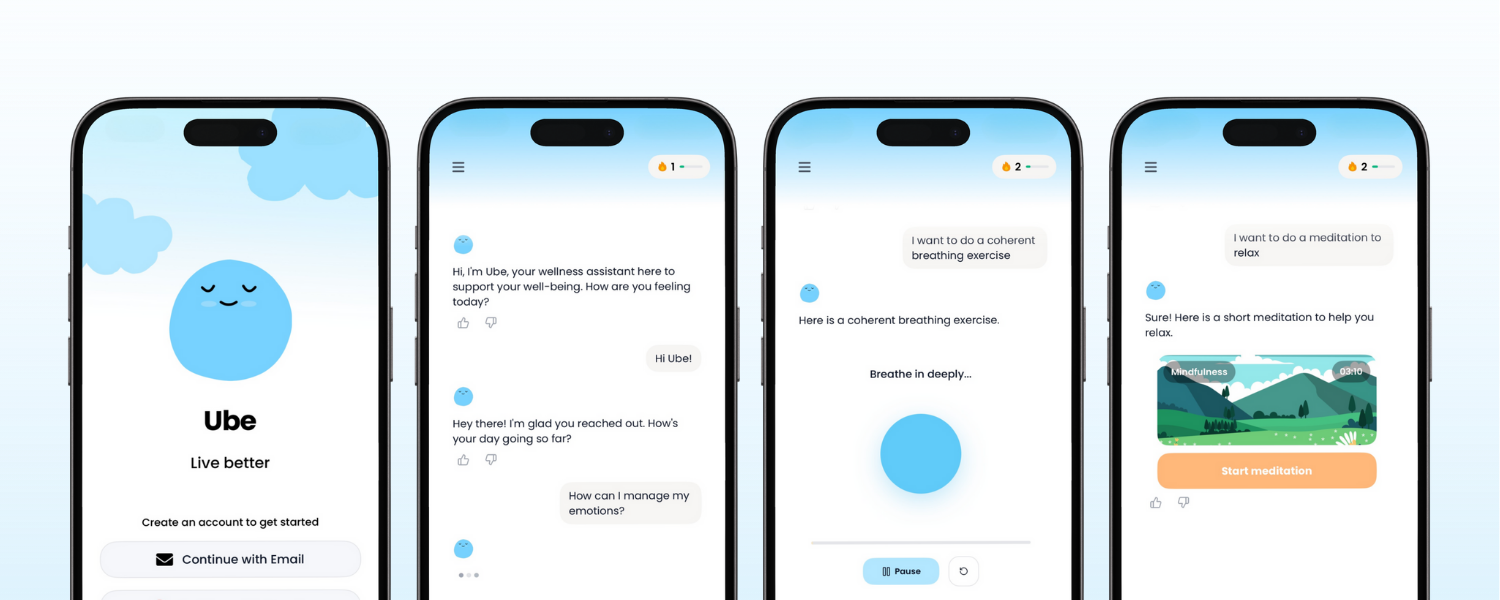Why breathing shifts stress so quickly?
Breathing sits at the intersection of body and mind, which is why breathing techniques to reduce stress can change your state in a few minutes. Slow, deliberate exhales stimulate the vagus nerve, nudging the nervous system toward rest-and-digest while dialing down cortisol and muscle tension. You also boost heart rate variability, a marker of resilience that rises when you are less threatened. A practical target is five to six breaths per minute, with a slightly longer exhale than inhale, which optimizes gas exchange and helps carbon dioxide stabilize so your brain stops sounding the internal alarm. The beauty is that breath is both a remote control and a readout. When you are rattled your breath becomes shallow and fast, so flipping the pattern tells the brain a safety signal. Harvard Health notes that paced breathing can reliably trigger the relaxation response, reducing anxiety and blood pressure [source]. In short, physiology-first calm is trainable and portable.

How to practice diaphragmatic breathing?
If you have ever tried to “take a deep breath” and felt more anxious, you likely lifted your chest instead of your diaphragm. Diaphragmatic breathing is gentle, quiet nasal breathing that expands low into your sides and back. Sit or lie down, rest one hand below your ribs, and let the inhale arrive through the nose until your lower hand rises and your ribs widen like a soft belt. Keep the neck, jaw, and shoulders relaxed, then let the exhale float out through the nose for a bit longer than the inhale. Aim for low effort, not big volume, because over-breathing can drop carbon dioxide too far and create dizziness or tingling. A comfortable pattern is a four-second inhale and a six-second exhale for several minutes. If you need a visual, Cleveland Clinic provides a clear overview of technique and benefits [guide]. With practice, your baseline breath becomes quieter, and stress reactivity eases.
Box breathing and 4-7-8, when should you use each?
Certain patterns work best for certain moments. Box breathing uses equal counts for inhale, hold, exhale, hold. Think four-four-four-four, repeated for a few minutes. The brief holds add focus and stability, useful before a presentation or during difficult conversations, because the structure anchors attention and reduces mental noise. If holds feel anxious, shorten them or skip the top hold entirely. The 4-7-8 pattern emphasizes a long, slow exhale after a gentle inhale and a still pause. It leans sedative, which makes it helpful for sleep onset, stress hangovers, or lingering adrenaline. Keep the breath quiet and avoid pulling in too much air, since technique is about cadence, not volume. Both are breathing techniques to reduce stress, and you can cycle them during the day. Box breathing is a strong choice for clarity under pressure, while 4-7-8 suits winding down, easing rumination, and settling the nervous system before bed.
Make it stick with daily cues and gentle metrics
Consistency beats intensity. Pair your breathing practice with a reliable cue, like starting your commute, waiting for coffee to brew, or opening your laptop. Two minutes done twice daily compounds more than one long session you skip. If you like feedback, consider simple metrics. Notice how quickly your breath rate drops, how easily your exhale lengthens, and whether you can keep nasal breathing during a brisk walk. Many find a personal resonant pace near five-and-a-half breaths per minute, which often lifts heart rate variability and mood. You do not need gadgets, yet a timer that hums at a gentle cadence can build automaticity. If you feel lightheaded, shorten the inhale, soften the holds, or return to natural breathing until steadier. Over time, sprinkle in micro-sessions under one minute before meetings, after alerts, or when you catch an internal spike. Small, frequent resets make breathing techniques to reduce stress a background habit you can rely on.
Troubleshooting common hurdles without quitting
Early on, some people feel restless, sleepy, or skeptical. Restlessness usually means you are forcing the breath. Try a smaller inhale and a slightly longer exhale while keeping jaw and shoulders relaxed. Sleepiness is not failure, it is a sign of parasympathetic shift. Sit upright or choose a pattern with shorter holds if you need alertness. If you get anxious during holds, release them and lengthen the exhale-only component until the body trusts the rhythm again. Nasal congestion complicates things, so steam, saline, or a short nasal cleanse can help you reclaim nasal airflow. If you have respiratory or cardiovascular conditions, start gently and check with a clinician before pushing intensity. Remember that your goal is not to breathe perfectly, it is to regain agency under stress. When the mind argues, let the breath proof outwork the story. Evidence builds fast when breathing techniques to reduce stress become a daily baseline.
Putting it together in real life
Stress rarely announces itself politely, so practice in the same places stress shows up. At work, try quiet paced breathing between emails to lower cognitive load before you answer. During commutes, sync breaths to traffic lights or mile markers to let accumulated tension drain. Before sleep, use 4-7-8 for three rounds to soften rumination, then switch to gentle six-second exhales until your body feels heavier. In a spike, start with two short nasal inhales to clear a sigh, then ride a long, unforced exhale to send a calming signal. If you want a research anchor, Harvard’s review on breath-driven relaxation outlines reductions in physiological arousal along with subjective stress [overview]. Over weeks, you will notice you need fewer conscious interventions because your baseline breath is slower, your HRV steadier, and your choices clearer when it counts.
Conclusion
You cannot control every stressor, but you can control the story your body tells your brain. Breathing techniques to reduce stress give you a quick, evidence-based lever to shift state, regain focus, and protect your energy. Start with diaphragmatic breathing to re-learn efficient mechanics, add box breathing or 4-7-8 as needed, and pair your practice with daily cues so it sticks. Keep the effort light, the exhale a bit longer, and your attention kind. If you would like gentle prompts, reflective check-ins, and compassionate nudges, let an AI companion guide a few minutes each day. With steady practice, the breath you already have becomes a reliable anchor, even when life speeds up.
